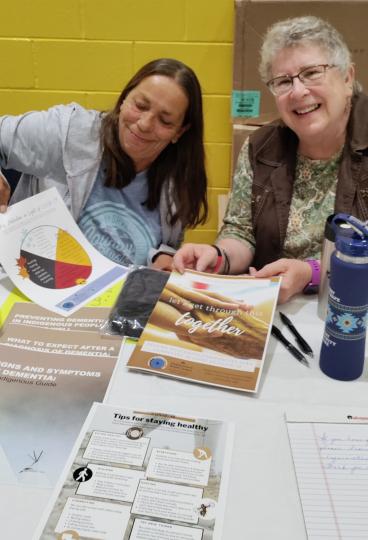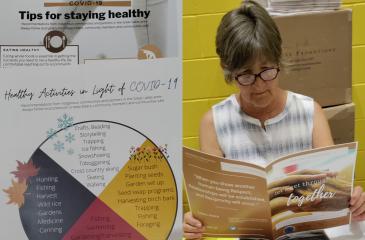With funding from CTSI, University of Minnesota researchers worked with local Indigenous community partners to develop evidence-based and culturally appropriate COVID-19 resources, creating three distinct fact sheets on staying healthy and staying connected during the pandemic.
The project, “Helping Indigenous communities stay connected in light of COVID-19,” was conducted by the Memory Keepers Medical Discovery Team (MK-MDT) with the aim of engaging local communities and promoting health equity.

Responding to community needs
The main research area for the MK-MDT is dementia, which is shaped by cultural and contextual factors in Indigenous communities. But once the COVID-19 pandemic hit in early 2020, the team quickly switched gears.
“At the start of the pandemic, many of our community partners were being pulled away from their ongoing research to respond to community members in need,” said principal investigator Kristen Jacklin, PhD, who is Executive Director of the MK-MDT and a professor at the University of Minnesota Medical School, Duluth Campus. “We wanted to be able to pivot from our work and help address the challenges facing these communities.”
Funding from CTSI—awarded through its COVID-19 Rapid Response Seed Grant program in April 2020—helped make that possible.
Confronting disparities
While COVID-19 has affected everybody to some degree, Indigenous groups have felt the burden of the pandemic more strongly. Indigenous and rural communities already experience disparities in access to healthcare and rates of communicable diseases, and social distancing guidelines also fail to account for the community-based lifestyle of Indigenous peoples.
“Some of the advice coming from medicine was isolationist, which stands in sharp contrast to Indigenous life,” Dr. Jacklin said. “We didn't want to duplicate what other organizations were developing and circulating, so our unique contribution was focusing on how to preserve connection to culture and community in safe ways during the pandemic.”
Creating culturally appropriate fact sheets
Led by Melissa Blind, PhD, Senior Research Associate, the team identified community-specific needs by consulting with Indigenous advisors and local experts, Tribal leadership, Indigenous community researchers, and Indigenous community advisory groups. They compiled their results into three fact sheets:
- A list of tips for staying healthy.
- A medicine wheel chart of healthy activities.
- A longer packet of information about staying connected during the pandemic.
“The winter was a long one and fear kept many people inside and isolated,” said Collette Pederson, one of the community partners researchers who worked on the project. “We tried our best to keep our Elders acknowledged and happy by sending letters, pictures, and phone calls, just to check up on them and hear their voices.”
Fact sheets were shared with local tribes and the public with the help of the Indigenous experts and advisors who contributed. In addition, they were promoted via social media and distributed at a local health fair and through an elderly nutrition program in communities with large Indigenous populations. Fact sheets are also available via the Memory Keepers Medical Discovery Team website.

Improving community health
Pederson has seen the effects of these healthy activities on her community.
“The community is busy doing the things they love to do—sugar bush, fishing, gardening, swimming, baseball, being able to go on walks, and so many more healthy activities,” she said. “When I look at our chart of healthy activities, it makes me smile for the simple reason that everything on the wheel is something our community is doing now.
This research was supported by the National Institutes of Health’s National Center for Advancing Translational Sciences, grant UL1TR002494. The content is solely the responsibility of the authors and does not necessarily represent the official views of the National Institutes of Health’s National Center for Advancing Translational Sciences.
